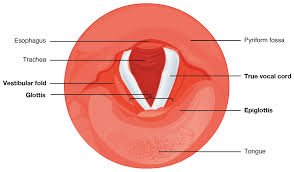A fungal ear infection, also known as Otomycosis, can cause itching, pain, and hearing problems if left untreated. This detailed guide covers everything you need to know—from causes, risk factors, and symptoms to effective medical treatments and natural home remedies for relief. You’ll also learn how fungal ear infection connects to other ear conditions and what daily habits can prevent it from returning. Whether your infection is mild or severe, this 1500–2000-word article gives you clear, actionable information to keep your ears healthy, your hearing sharp, and your comfort restored.

What Is a Fungal Ear Infection?
A fungal ear infection, medically called Otomycosis, is a condition caused by fungal growth in the outer ear canal. The ear canal is warm, moist, and dark—perfect conditions for fungi to thrive.
The most common culprits are Aspergillus and Candida species. While bacteria cause typical ear infections, fungi can lead to persistent and itchy infections that don’t respond to regular antibiotics.
This infection can affect anyone but is more common in people living in humid or tropical regions, swimmers, and those who frequently use earbuds or hearing aids.
1. Causes of Fungal Ear Infection
Let’s start with what triggers it. A fungal ear infection develops when the natural balance of bacteria and fungi in the ear is disturbed. Here’s what usually causes it:
- Moisture buildup: Regular swimming or showering without properly drying your ears can create a damp environment for fungi.
- Frequent ear cleaning: Using cotton buds too often removes protective earwax, making your ear more vulnerable.
- Skin conditions: Eczema or dermatitis inside the ear can lead to tiny cracks that allow fungi to enter.
- Long-term antibiotic or steroid use: These can kill beneficial bacteria that keep fungal growth under control.
- Hearing aids or earbuds: Trapped moisture and dirt behind these devices create ideal fungal breeding grounds.
- Humidity and sweating: People in hot climates or those who sweat excessively are at higher risk.
Bottom line: A fungal ear infection starts small but spreads fast when the ear environment becomes too moist and unprotected.
2. Common Symptoms You Shouldn’t Ignore
Recognizing the signs early helps prevent complications. Symptoms of fungal ear infection often differ from bacterial infections and may include:
- Persistent itching inside the ear
- Redness or flaky skin around the ear canal
- Thick or watery discharge (can be white, yellow, black, or gray)
- Feeling of fullness or blockage in the ear
- Mild to moderate ear pain
- Reduced hearing or muffled sounds
- Swelling or tenderness
- Unpleasant smell coming from the ear
If you notice a mix of these symptoms—especially itching, discharge, and blocked hearing—there’s a high chance it’s a fungal ear infection rather than a bacterial one.
3. Problems You Might Face During Infection
Dealing with a fungal ear infection isn’t just about discomfort—it can affect your daily life more than you’d expect.
- Constant irritation: Itching makes it nearly impossible to focus or sleep.
- Temporary hearing loss: Discharge and fungal debris block sound waves.
- Ear pain and pressure: Inflammation can make even small sounds painful.
- Recurring infections: Without proper care, it can keep coming back.
- Emotional frustration: The combination of irritation, pain, and hearing issues can cause stress and anxiety.
Ignoring symptoms can also lead to secondary bacterial infections, which are harder to treat and take longer to heal.
4. How Doctors Diagnose Fungal Ear Infection
A simple ear examination is usually enough to confirm a fungal ear infection.
Your doctor may:
- Use an otoscope to inspect the ear canal and check for fungal debris.
- Take a sample of ear discharge to identify the specific fungus under a microscope.
- Evaluate if there’s a mix of bacterial and fungal infection.
Accurate diagnosis matters because using antibiotics for a fungal infection can make it worse. Once confirmed, treatment can begin immediately.
5. Medical Treatments That Actually Work
Treatment focuses on removing fungal growth, reducing inflammation, and restoring balance in the ear canal.
Common medical treatments for fungal ear infection include:
- Ear cleaning (aural toilet): The doctor gently cleans the ear canal using suction or irrigation to remove fungal debris.
- Antifungal ear drops: Drops containing clotrimazole, miconazole, or nystatin help eliminate the fungus.
- Antifungal creams: Used around the ear if the infection spreads to the outer skin.
- Oral antifungal medication: For severe or recurrent cases, tablets like fluconazole may be prescribed.
- Pain relief: Over-the-counter painkillers (paracetamol or ibuprofen) can help with discomfort.
Never self-diagnose or insert random liquids into your ear without medical advice. The ear canal is sensitive, and the wrong treatment can cause more harm.
6. Home Remedies for Relief (Use Safely)
Some gentle home remedies can complement medical treatment and speed up recovery. Always use them only after consulting a doctor—especially if your eardrum isn’t damaged.
Effective home remedies for fungal ear infection:
- White vinegar and rubbing alcohol (1:1 mix): This solution helps dry the ear and restore natural pH. Use a few drops after swimming (not during active infection).
- Garlic oil: Has antifungal properties. Warm slightly and place 1–2 drops in the ear (only if advised by a doctor).
- Apple cider vinegar: Dilute with equal parts of water, soak a cotton ball, and gently clean the outer ear.
- Coconut oil: Known for antifungal effects; can soothe dryness and irritation around the ear entrance.
- Hydrogen peroxide (3%): Helps remove wax and debris, but should be used cautiously and never in a perforated ear.
Remember: these are supportive remedies, not replacements for professional treatment. The keyword here is gentle care—never insert anything deep into the ear.
7. Lifestyle and Preventive Self-Care Tips
Preventing fungal ear infection is easier than treating it. Small changes in your daily habits can make a huge difference.
- Keep ears dry: After swimming or bathing, tilt your head to drain water and gently pat ears dry with a towel.
- Avoid cotton buds: They push dirt deeper and remove protective earwax.
- Clean hearing aids regularly: Use disinfectant wipes and allow devices to dry overnight.
- Limit ear drops: Overusing antibiotic drops disrupts ear flora and invites fungi.
- Stay in low-humidity environments: Use a dehumidifier if you live in a damp area.
- Manage skin conditions: Treat eczema or psoriasis to prevent fungal entry points.
By following these preventive steps, you reduce the risk of fungal ear infection recurring—and protect your hearing in the long run.
8. Other Problems Connected to Fungal Ear Infection
A fungal ear infection may not stay limited to the ear canal. It can lead to several connected issues if ignored:
- Chronic otitis externa: Repeated fungal growth can cause long-term inflammation.
- Middle ear infection: In severe cases, the fungus can spread deeper, especially if the eardrum is damaged.
- Hearing loss: Ongoing blockage and inflammation can temporarily reduce hearing clarity.
- Tinnitus: Some patients experience ringing or buzzing sounds in the ear.
- Vertigo: Rarely, fungal infection may affect balance, leading to dizziness or nausea.
The key is early treatment. Once you clear the infection fully and maintain hygiene, these secondary issues often disappear.
9. When to See a Doctor Immediately
Some symptoms mean it’s time to stop home remedies and seek medical help fast:
- Sharp ear pain that doesn’t improve
- Sudden hearing loss
- Swelling around the ear or face
- Fever or discharge with foul odor
- Dizziness or vertigo
Delaying treatment may lead to severe inflammation or permanent ear damage. Always consult an ENT specialist if your symptoms worsen or return frequently.
Positive Side of Early Treatment
Here’s the good part: when you act early, fungal ear infection clears up fast—usually within a week or two. Pain eases, hearing returns to normal, and itching stops.
Regular ear care and proper hygiene can keep your ears healthy year-round. Many people find their overall ear sensitivity improves after following prevention habits consistently.
Negative Side of Ignoring Symptoms
If you ignore a fungal ear infection, it won’t go away on its own. The fungus can spread deeper, causing recurring inflammation, secondary bacterial infections, and hearing problems.
Chronic infections can scar the ear canal or affect balance. That’s why timely treatment is not just smart—it’s essential.
Final Thoughts
Fungal ear infection might sound minor, but it’s one of those conditions that can quickly move from “slightly annoying” to “seriously uncomfortable.”
The good news? It’s completely manageable with awareness, hygiene, and the right treatment.
Learn your risk factors, keep your ears dry, avoid unnecessary cleaning, and treat symptoms early.
Your hearing is precious—protect it. With consistent fungal ear infection self-care, you can prevent recurrence and enjoy life without constant itching or irritation.

